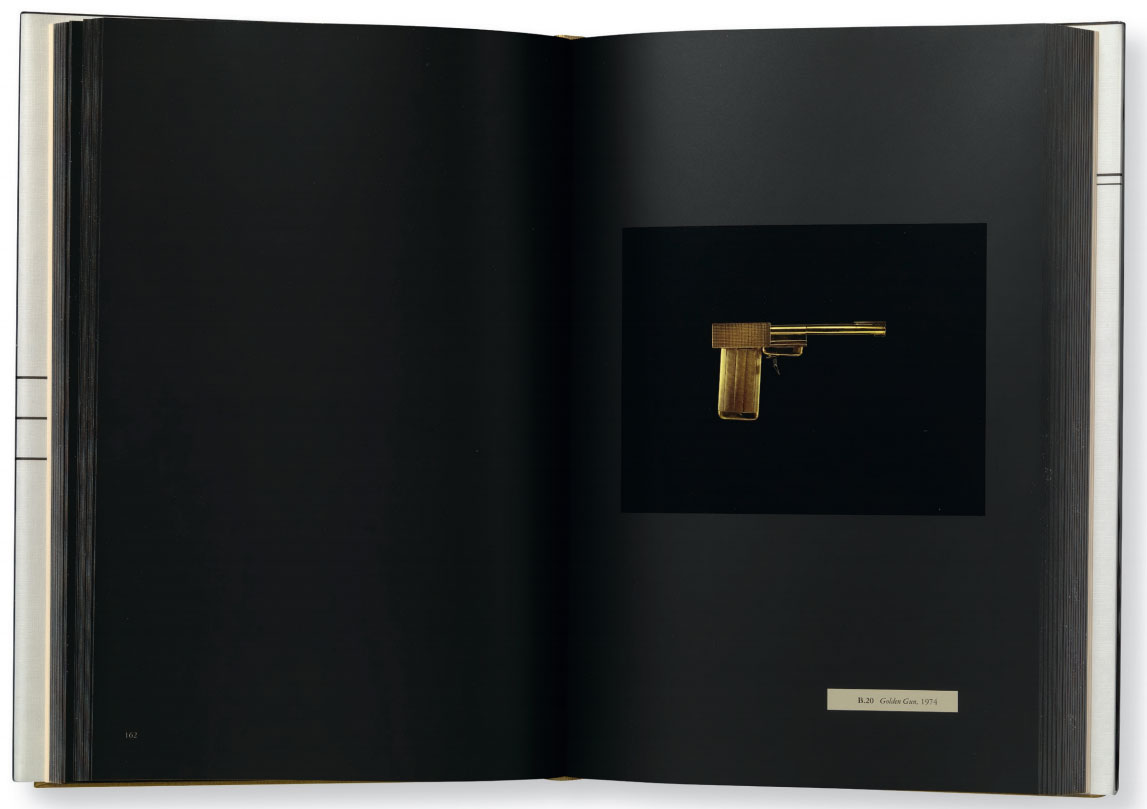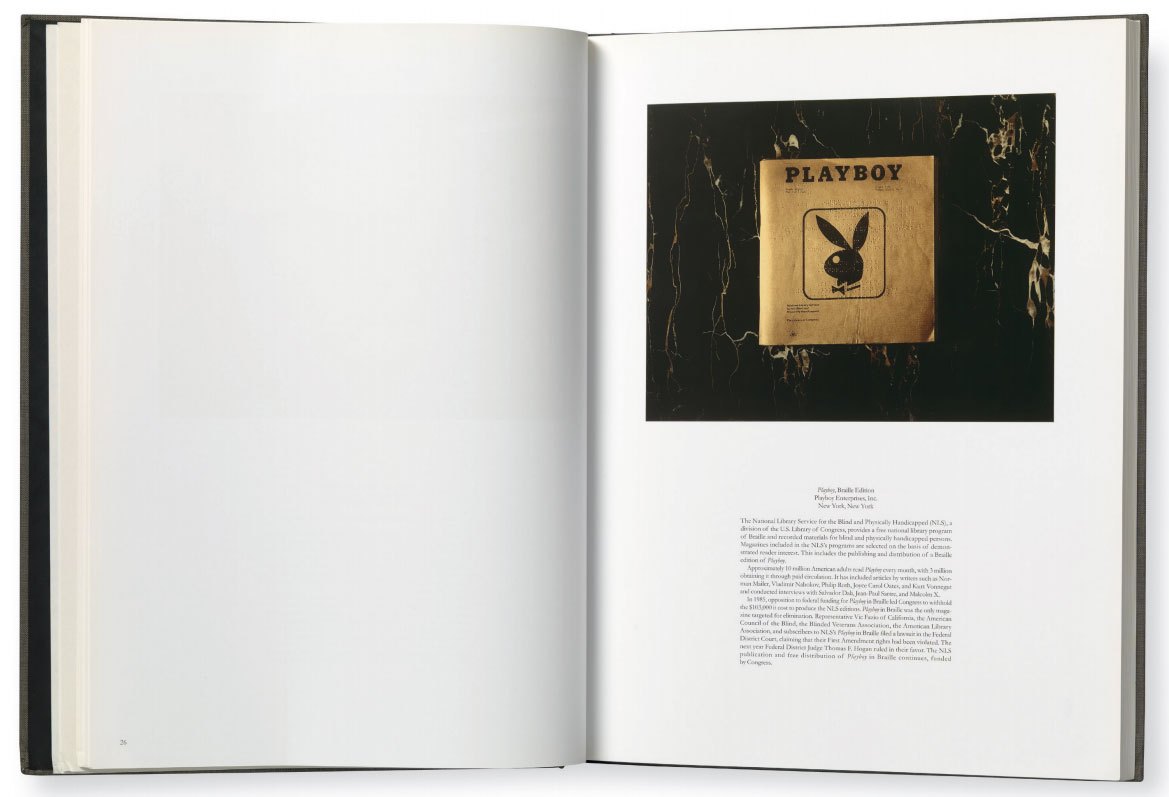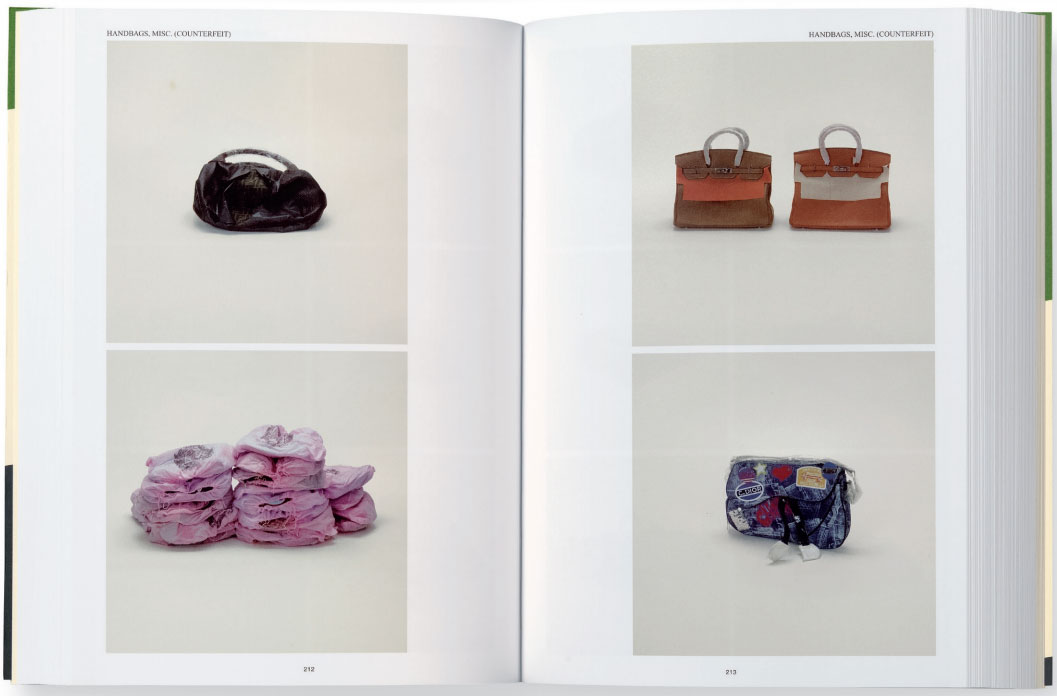
Artists Who Make Books: Taryn Simon
Concerned with the structure of secrecy, this artist's work makes for some very compelling printed matter
The American artist and photographer Taryn Simon is interested in how "we construct authority and systems meant to give us a sense of order,” explains the US art critic Jeffrey Kastner in our new publication, Artists Who Make Books.
One of the ways Simon examines this, and imposes a sense of order, is through bookmaking. But these books aren’t simple examinations of well-known and widely understood power structures, as Kastner writes:
“The range of her book subjects - a compendium of goods confiscated by US Customs at New York’s John F. Kennedy airport; a typology of characters and props from the cinematic adaptations of Ian Fleming’s spy novels; a documentary effort related to the work of the Innocence Project, which uses DNA evidence to exonerate men and women wrongly convicted of serious crimes - suggests that the artist’s notion of order and authority is a capacious one, and one that actively seeks out unexpected, and often clandestine, manifestations of power and control.”

Pitched somewhere between the typologies of the Dusseldorf School and the campaigning, investigative art of Trevor Paglen, Taryn's books ask us to question the power structures that support our world. Take her 2003 work, The Innocents, wherein Simon photographed wrongly convicted crime suspects in places significant to their miscarriage of justice: the scene of their misidentification, the scene of their arrest, the scene of the crime, or the scene of the alibi.
Consider also her 2007 publication, An American Index of the Hidden and Unfamiliar, which, as the name suggest, “consists of photographs of sites steeped in obscurity,” Kastner writes, “a cryopreservation unit, a nuclear waste storage facility, an air-force test base, a handgun factory, the art collection that hangs at CIA headquarters, the office of a doctor who performs hymenoplasties.”

Some of Simon’s books get fairly complicated. Take her Birds of the West Indies series. These two books “focus on Ian Fleming and his James Bond franchise, its protagonist’s name borrowed from an eminent American-born ornithologist working in the Caribbean in the early decades of the twentieth century. The first book, also titled Birds of the West Indies (2013), is a plain spoken document of the women, weapons, and vehicles that appear in the Bond films, while in the second, Field Guide to the Birds of the West Indies (2016), Simon develops a typology of all the various birds that happen to show up in the movies, identifying them by the time code of their appearance, the country in which they appear in a given film’s narrative, and the year in which they flew.”

Other treatments, such as her 2010 book Contraband are far simpler, though no less impressive. “Containing many hundreds of photographs taken over the course of a week spent at the customs and international mail facilities at New York’s John F. Kennedy airport, the project - presented in Simon’s characteristic typologically deadpan mode, with page after page of crisp declarative photographs and captions - cracks a window open onto the oddities of two of contemporary society’s most systematized modes of supposed personal privacy, the postal package and the suitcase. The effect is to highlight the strange contradictions of these conveyances and the things (illicit and otherwise) we put inside them; they exist in a peculiar gray zone between a vague presumption of freedom and confidentiality and the realities of a security state whose mechanisms we all grant but almost never truly consider.”
For more on Simon’s work, and many other impressive bibliophile artists order a copy of Artists Who Make Books here.